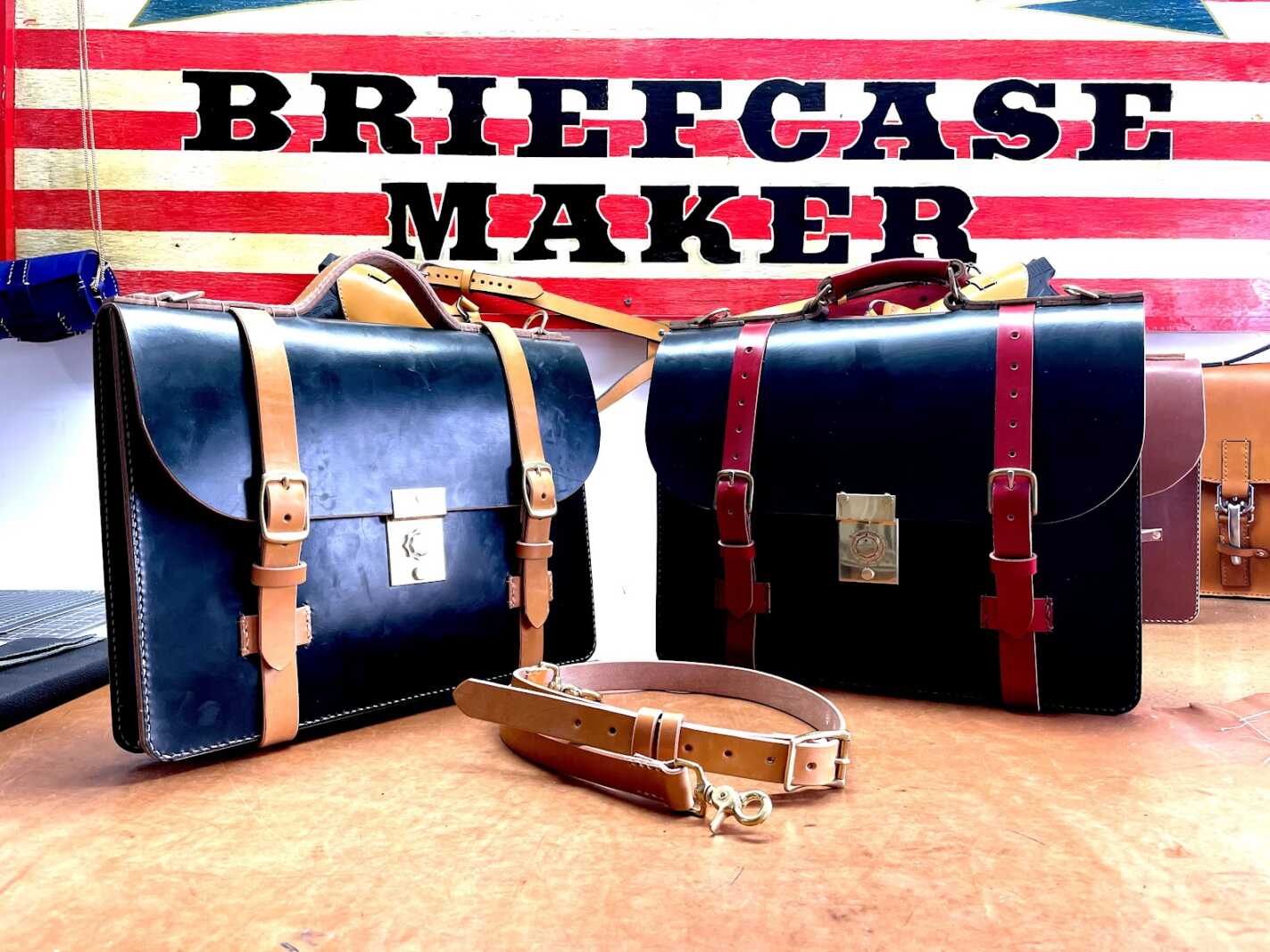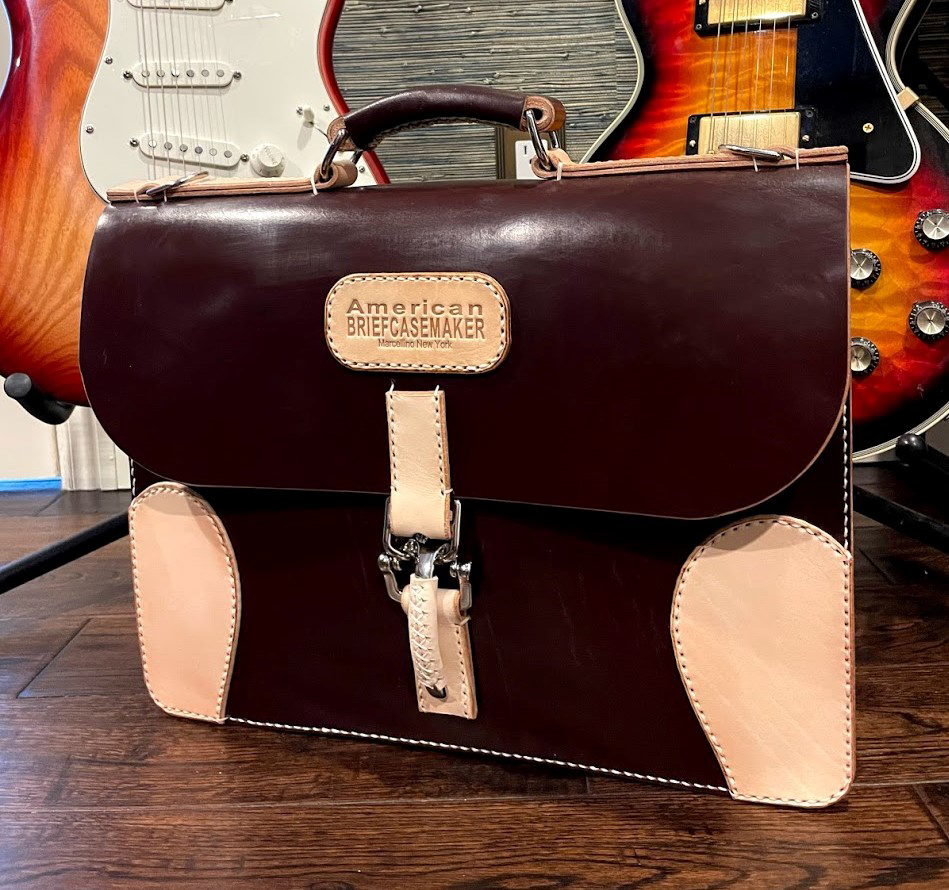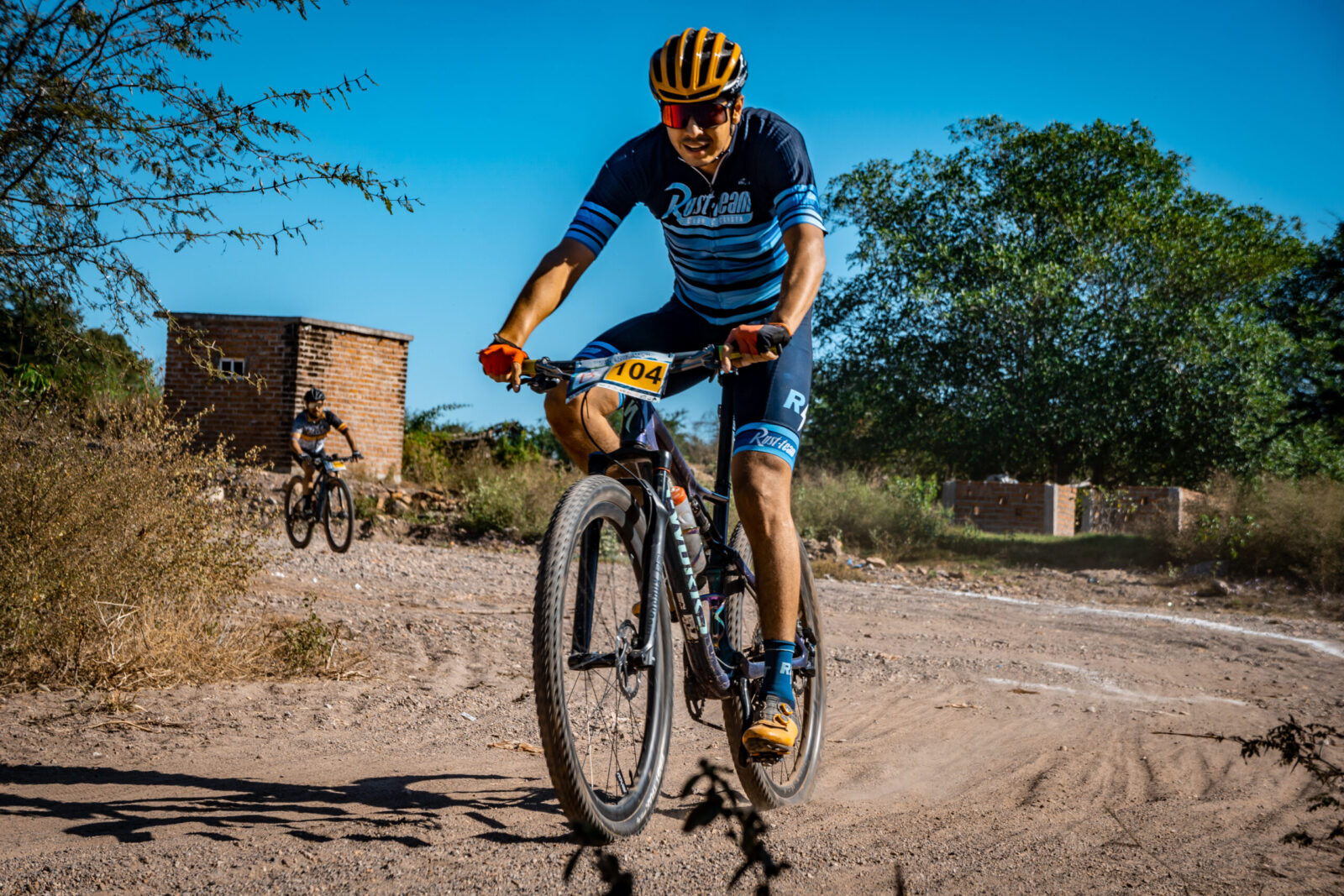
The leather briefcase has a long and varied history that spans over a century. Originally designed as a practical carrying case for documents and other important items, the leather briefcase has evolved into a fashion accessory that is used by both men and women.
In the early 20th century, leather briefcases were primarily used by businessmen and professionals as a way to transport and protect important papers and documents. These early leather briefcases were often simple in design, with a rectangular shape and minimal embellishments.
As the leather briefcase became more popular, it began to incorporate more style and design elements, such as unique shapes, colors, and hardware. Today, the leather briefcase is no longer just a utilitarian accessory, but a fashionable statement piece that is used by people from all walks of life.
There are now a wide variety of leather briefcases available on the market, ranging from classic and traditional styles to more modern and trendy designs. Whether used for work or leisure, the leather briefcase has cemented its place as a timeless accessory that combines function and fashion.
 Origins of the leather briefcase
Origins of the leather briefcase
Brief history of the leather briefcase’s origins as a utilitarian carrying case
The leather briefcase has its origins as a utilitarian carrying case that was used to transport and protect important documents and other items. The earliest known leather briefcases date back to the early 19th century, when they were primarily used by lawyers and other professionals to carry legal documents and other papers.
In the early 20th century, the leather briefcase became more popular as a practical accessory for businessmen and professionals. These early leather briefcases were often simple in design, with a rectangular shape and minimal embellishments. They were primarily used to carry papers and documents, and were often made of durable leather to withstand the wear and tear of daily use.
As the leather briefcase became more widely used, it began to evolve in terms of both function and design. Some early leather briefcases featured additional compartments and pockets for organization, as well as handles and shoulder straps for easier carrying. Despite these improvements, the leather briefcase remained primarily a utilitarian accessory until it began to be used more for fashion in the latter half of the 20th century.
Examples of early leather briefcases and their use
Early leather briefcases were primarily used by lawyers and other professionals as a way to transport and protect important documents and papers. These early leather briefcases were often simple in design, with a rectangular shape and minimal embellishments. They were made of durable leather to withstand the wear and tear of daily use, and often featured additional compartments and pockets for organization.
One example of an early leather briefcase is the “lawyer’s brief,” which was popular among legal professionals in the 19th and early 20th centuries. These briefcases were often made of leather and featured a flap closure and handles for carrying. They were used to transport legal documents and other papers, and were often carried by lawyers to and from the courtroom.
Another example of an early leather briefcase is the “doctor’s bag,” which was used by doctors to carry medical equipment and supplies. These briefcases were often made of leather and featured a hinged lid and handles for carrying. They were used by doctors to transport medical instruments and other supplies when making house calls or visiting patients in hospitals.
In addition to lawyers and doctors, early leather briefcases were also used by other professionals, such as businessmen, accountants, and architects, as a practical accessory for carrying important papers and documents.

Transition to a fashion accessory
Factors that contributed to the leather briefcase’s transformation into a fashion accessory
There are several factors that contributed to the leather briefcase’s transformation into a fashion accessory:
- Changes in the business world: As the business world became more casual and relaxed in the latter half of the 20th century, the leather briefcase began to be seen as more of a fashion accessory than a utilitarian item. Businessmen and professionals started to embrace more stylish and fashionable briefcases as a way to make a statement and express their personal style.
- Advancements in materials and manufacturing: The development of new materials and manufacturing techniques allowed for the creation of more stylish and fashionable leather briefcases. These new materials, such as synthetic leather and nylon, were lighter and more flexible, which made it easier to create briefcases with unique shapes and design elements.
- Influence of popular culture: The leather briefcase began to be featured in popular culture, such as movies and television shows, which helped to further its transformation into a fashion accessory. As more and more people saw leather briefcases being used by fashionable and stylish characters on screen, they began to see the briefcase as a fashionable accessory themselves.
- Changes in gender roles: As gender roles became more fluid and flexible, the leather briefcase began to be used by both men and women. This helped to further its transition from a utilitarian accessory to a fashionable one, as more people began to use it as a way to express their personal style.
Examples of early leather briefcases that began to incorporate style and design elements
As the leather briefcase became more popular, it began to incorporate more style and design elements. Here are some examples of early leather briefcases that began to incorporate these elements:
- The “Attache case” was a popular early leather briefcase that was designed to be carried by hand. These briefcases were often made of leather and featured a flap closure and handles for carrying. They were popular among businessmen and professionals in the mid-20th century and were often used to carry documents and other important papers.
- The “Tote bag” was another early leather briefcase that was designed to be carried by hand. These briefcases were often made of leather and featured a rectangular shape with a flat bottom and open top. They were popular among women in the mid-20th century and were often used as a stylish and practical accessory for carrying items such as books and papers.
- The “Messenger bag” was a popular early leather briefcase that was designed to be worn over the shoulder. These briefcases were often made of leather and featured a flap closure and a long shoulder strap for carrying. They were popular among both men and women in the mid-20th century and were often used as a fashionable and practical accessory for carrying items such as laptops and documents.
As the leather briefcase became more fashionable, it began to incorporate more design elements such as unique shapes, colors, and hardware. These design elements helped to further its transformation from a utilitarian accessory to a fashionable one.



Modern leather briefcases
Overview of the current state of the leather briefcase market
The leather briefcase market is currently very diverse, with a wide variety of styles and designs available to suit different tastes and needs. There are leather briefcases available for both men and women, in a range of sizes and styles to suit different needs.
Some popular styles of leather briefcases include the classic attache case, the more casual tote bag, and the modern messenger bag. There are also a wide variety of materials used in the construction of leather briefcases, including traditional leather, synthetic leather, and nylon.
In terms of design, leather briefcases can range from classic and traditional styles to more modern and trendy designs. There are leather briefcases available in a range of colors, from classic black and brown to more vibrant shades such as red and blue. Many leather briefcases also feature additional design elements such as hardware, decorative stitching, and embossed patterns.
Overall, the current state of the leather briefcase market is very dynamic and diverse, with a wide range of options available to suit different tastes and needs.
Examples of modern leather briefcases that combine utility and style
Here are some examples of modern leather briefcases that combine utility and style:
- The “Rolling briefcase” is a modern leather briefcase that features a set of wheels and a retractable handle, making it easy to transport while on the go. These briefcases are often made of durable leather and feature multiple compartments and pockets for organization. They are a popular choice for business travelers who need a stylish and practical way to carry their belongings.
- The “Backpack briefcase” is a modern leather briefcase that combines the functionality of a traditional briefcase with the convenience of a backpack. These briefcases are often made of leather and feature a variety of compartments and pockets for organization, as well as comfortable shoulder straps for carrying. They are a popular choice for professionals who need a stylish and practical way to carry their belongings while on the go.
- The “Crossbody briefcase” is a modern leather briefcase that can be worn across the body for hands-free carrying. These briefcases are often made of leather and feature a variety of compartments and pockets for organization, as well as a long shoulder strap for carrying. They are a popular choice for both men and women who need a stylish and practical way to carry their belongings while on the go.
Overall, modern leather briefcases are designed to combine style and function, offering a stylish and practical way to carry important documents and other items.
It is difficult to predict the future of fashion with certainty, but it is likely that the leather briefcase will continue to be a popular choice as a fashion accessory. Despite the many advancements in technology and the proliferation of digital devices, the leather briefcase remains a timeless classic that continues to be a staple in the world of fashion and business.
One reason for the enduring appeal of the leather briefcase is its versatility. It can be dressed up or down to suit a variety of occasions and is available in a wide range of sizes, styles, and colors to suit different needs and preferences. This versatility makes it a popular choice for professionals and fashion-conscious individuals alike.
Another reason for its enduring appeal is its practicality. Its rectangular shape and flat bottom make it easy to store and transport documents and other work-related items, and its handle or shoulder strap allows for easy carrying. The leather briefcase is also often equipped with multiple compartments and pockets to help organize and store other items, which can be useful for professionals.
Overall, it is likely that the leather briefcase will continue to be a popular choice as a fashion accessory in the future, thanks to its versatility, practicality, and timeless style.




















